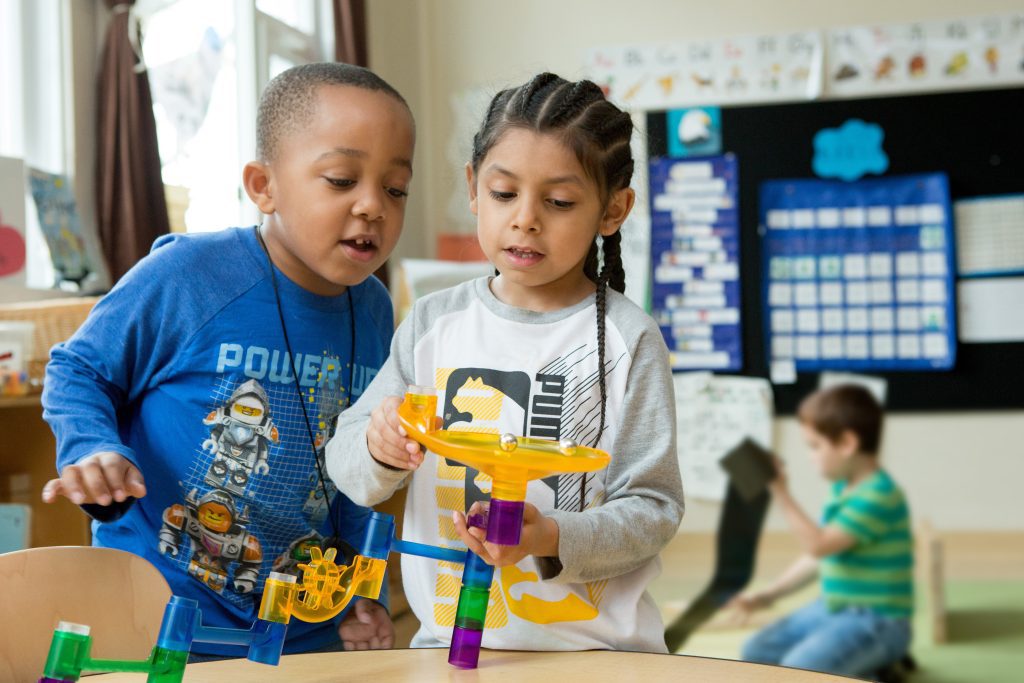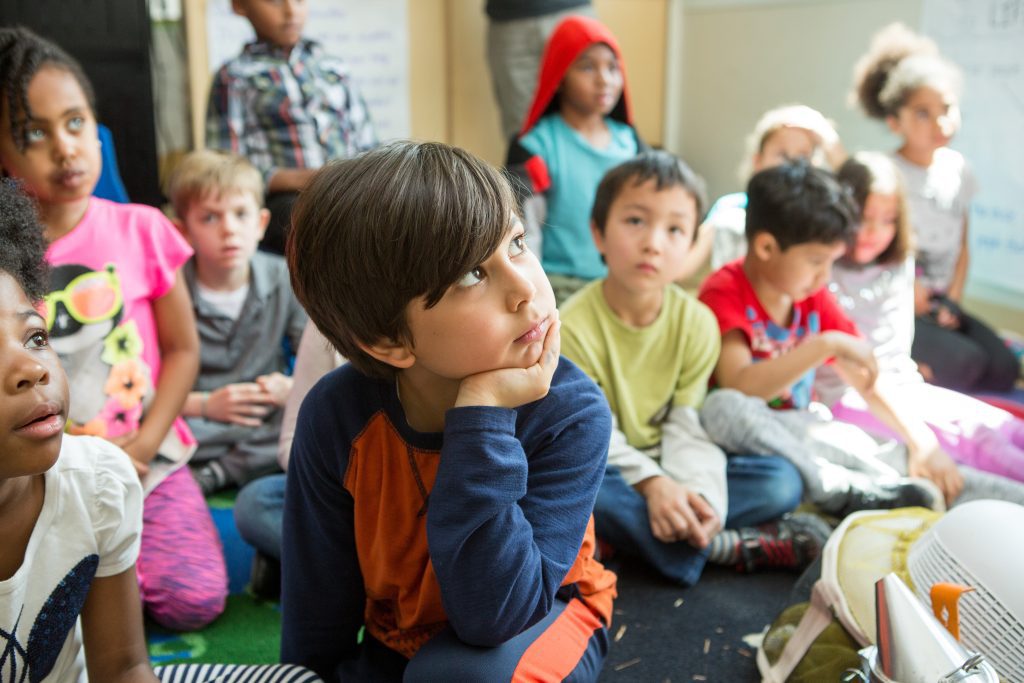Introduction
This report includes findings from the CA MTSS Phase 2A Pilot Project’s Year 2 of participation qualitative data collection and analysis.
This pilot project follows 14 schools from 7 districts across California as they implement the California Multi-tiered System of Support (CA MTSS) framework at the school level with a focus on school climate, positive behavioral supports, and social-emotional learning. The purpose is to shed light on California Multi-Tiered System of Support (CA MTSS) implementation processes, successes, and challenges from the schools participating in the pilot. This report builds on the Baseline Data Summary, in which we presented data from Year 1 of participation, the 2019-20 school year.
The CA MTSS Phase 2A pilot project follows 14 schools (6 elementary schools, 7 middle or junior high schools, and 1 high school) from 7 districts across California as they implement the CA MTSS framework at the school level with a focus on school climate, positive behavioral supports, and social-emotional learning. The project is co-led by Orange County Department of Education, Butte County Office of Education, and the University of California, Los Angeles Center for the Transformation of Schools (UCLA CTS).
Key Findings
Finding 1: Consistent coaching was an important resource for implementation efforts. The processes and procedures for coaching varied across school sites as a result of the pandemic, coach and staff turnovers, and, at times, unclear visions of CA MTSS implementation. In general, principals who reported consistent and positive collaboration with their coaches also reported more understanding and benefits of CA MTSS implementation. In contrast, at school sites where the relationship between administrators and coaches was inconsistent, challenges in MTSS implementation were present.
Finding 2: School site implementation teams played an important role in the CA MTSS pilot. However, the prioritization of implementation teams varied across school sites. A noticeable benefit of the implementation teams was that teams tended to have a clear understanding of the needs of the school community, and they were able to participate in the collaboration with the CA MTSS coach.
Finding 3: PBIS supported the use of data and tiered student supports, but needed complementary programs. Not only was PBIS used as a tool for data collection, but a few principals reported that their schools utilized PBIS matrices as the foundation for tier one and two interventions and supports for CA MTSS implementation. Principals and coaches recognized that PBIS alone is insufficient to support the diverse behavior needs of students, and more comprehensive support and interventions are needed (e.g., professional development to address staff mis/understandings of race, culture, and equity; social and emotional learning; restorative practices).
Finding 4: Principals reported gaining a sense of focus for their MTSS-related work. Many principals reported that the most important gain resulting from CA MTSS pilot program participation was a sense of focus and direction for their work related to student supports and school climate. In addition, participation lent various initiatives legitimacy as part of the larger CA MTSS framework (instead of, as one principal put it, “sneaking in” new initiatives), resulting in greater teacher buy-in.
Finding 5: Principals reported becoming aware of the need for a wider equity lens. Some principals reported that CA MTSS helped raise their awareness of the need to adopt a new, wider lens on equity, as well as the need to focus on culturally responsive instruction and addressing discipline disparities.
Finding 6: Principals reported valuing resources provided by coaches. Some principals reported that their implementation was greatly supported by the resources provided by their coaches. For example, some coaches supported principals with data monitoring, specific implementation strategies, and sometimes even with teacher professional development.
Finding 7: Inconsistent coach-school relationships posed a challenge to implementation. For many principals, a challenge arose from not having a consistent relationship with a coach, especially during the first year. In many cases, principals conjectured that this inconsistency stemmed from the upheaval the pandemic caused in the education system, placing more demands on coaches in their other roles.
Finding 8: A lack of time to prioritize CA MTSS was an important challenge for principals. This included time to meet with coaches and with MTSS-related implementation teams (e.g., MTSS leadership team, PBIS team); and time to engage with and understand CA MTSS well enough to share with staff and to implement. Some principals reported that having a coach who consistently supported them to keep their focus on MTSS or who helped provide clear direction for engaging in implementation was (or would have been) helpful for overcoming this challenge.
Finding 9: School staff burnout from the pandemic posed an important challenge for implementation. Principals and coaches described teachers, specifically, as “drowning,” “traumatized,” and “running on adrenaline” the entire year as a result of the pandemic. Some schools struggled with teacher shortages, at times because teachers were so exhausted that they could not make it to the virtual classroom. Within this context, principals reported a lack of time for prioritizing MTSS, including not being able to ask teachers to engage in activities additional to their focus on curriculum and instruction.
Finding 10: Gaining teacher buy-in for CA MTSS posed a challenge at some schools. At some schools, principals and coaches reported that they were mindful of gaining teacher buy-in for CA MTSS-related work. According to interviewees some factors helped increase teacher buy-in for MTSS during this difficult school year: (1) strong leadership from principals; (2) directly involving teachers in implementation efforts (e.g., including teachers in MTSS meetings to discuss culturally responsive pedagogy; teachers meeting one-on-one with a coach over zoom); and (3) highlighting the big-picture nature of MTSS as a framework for organizing various initiatives.
Finding 11: The use of data was a step towards addressing discipline disparities, according to principals and coaches. Specifically, respondents discussed “looking deeply at data,” and asking the question, “what is the data telling us?” Additionally, respondents discussed the use of discipline referrals, attendance, and suspension as sources of data that were used to engage conversation amongst staff about disparities. However, principals and coaches provided limited information regarding what these conversations looked like or how data were disaggregated to gain an understanding of disparities.
Finding 12: Schools focused on ethnic/racial or cultural diversity and reducing discipline disparities through professional development. Respondents discussed engaging in schoolwide and districtwide professional development training centered around cultural responsiveness, restorative practices, and additional alternative discipline frameworks. However, at certain sites administrators reported a delicate balance between staff buy-in and discussing racial or ethnic disparities.
Finding 13: COVID-19 posed a barrier to discussions around ethnic/racial or cultural diversity and reducing discipline disparities. Principals reported placing their discussions around discipline disparities “on hold” during the past year due to the pandemic and discussed a lack of discipline data during the past year. They also shared that they refocused their attention on issues related to rurality or poverty during the past year due to the increased need for access to technology resources at home. By shifting their attention to addressing equity issues related to access, sites were limited in their capacity to have meaningful conversations around ethnic/racial or cultural diversity and did not seem to discuss the intersections between poverty/access and race.
Finding 14: Coaches and principals had to adapt their communication as a result of the pandemic. COVID-19 impacted how coaches and principals communicated during the academic year. Virtual methods of communication were essential during this time. Many coaches and principals managed to create a working schedule that held them accountable for maintaining a consistent, communicative relationship. Consistent communication allowed for a sustained system of accountability between the coach and principal, leading to implementation progress.
Finding 15: Expressions of care from coaches were central for trust and collaboration. Many coaches and principals highlighted the importance of coaches expressing care, listening, and understanding before more practical support such as providing resources or skills. Additionally, an essential component of coach-school site collaboration was a non-hierarchical relationship in which coaches met school sites’ needs rather than imposing their approaches. All of this bred trust and provided much-needed emotional support during an especially stressful year.
Finding 16: Coach familiarity with geographic area was important for the coaching relationship. Coaches brought a variety of experiences and expertise to their work with school sites. An important aspect of this background was familiarity with a geographic area/community. Both coaches and principals reported on the value of coaches being able to provide personalized support to their designated school sites when they held prior experience working with schools situated in similar geographical regions and communities.
“We’re in a community where the demographics have changed, but the dominant culture, majority culture, by a little bit, hasn’t realized that it’s changed. We’re beginning those conversations. Conversations about equity, about inclusion. From an administrative point of view, they need to be at the center of what we’re doing. This last year, we’ve just been in survival mode, but they need to be at the center of what we’re doing, and it’s a very harsh reality that we have to face as the demographics continue to change.”Principal
Related Work






